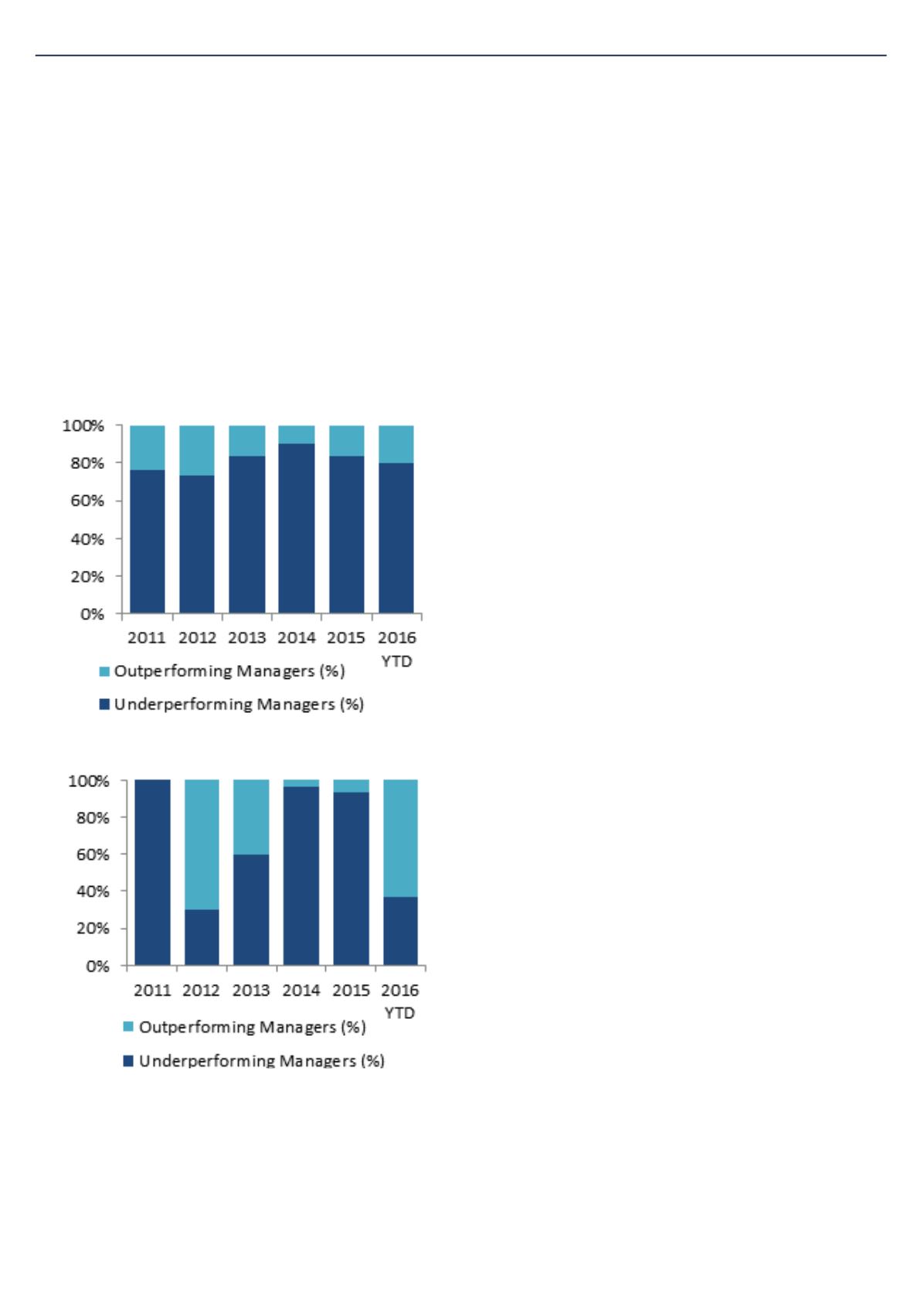

7
Irish Pensions Magazine Autumn 2016
Expert Opinion
Advertorial
What is particularly fascinating about this is the fact
that underperformance cannot be blamed on a single
bad year or a one-off ‘Black Swan’ event.
In the local currency segment, the percentage of
outperformers is consistently about 20–25%. In the
hard currency space, there are some sporadic hits (as
in particularly good years like 2012 and H1 2016), but
more often there are significant misses that lead to
active managers underperforming over the medium
and long term.
Figure 2: Active funds’ annual performance
relative to benchmark
Local Currency EM Debt
Hard Currency EM Debt
Source: Morningstar as at 30 June 2016.
Past performance is not a guarantee of future results.
Ultimately, the inherently ‘high-octane’ and
volatile nature of the EMD sector drives active
underperformance. Investor sentiment often drives
returns and may be misaligned with fundamental
valuations; unpredicatable geopolitical factors also
play a part.
Diversification as a Bulwark
Unpredictability could be a byword for EM investing,
given that sell-offs are so often event and sentiment
driven. But it has been shown again and again that
diversification helps mitigate against potential credit
events and a credit risk premium can be harvested
across the overall portfolio to compensate for such
events.
Our study of active managers’ biases reveals that the
vast majority of funds take a higher beta exposure
relative to the underlying market, presumably with
the intention of earning carry and benefiting from
any market rally. Looking at the hard currency
universe, the average beta of active funds stands
at around 1.25 – meaning one can expect them to
outperform ‘up’ markets by about 25%. Only 7%
of the active fund universe has a beta that is lower
than the market, despite the prevailing view earlier
in 2016 that emerging markets and China could face
a challenging time. In the five-year period to June
2016, funds with a beta of 1 or lower significantly
outperformed strategies with higher-than-market
betas (average returns of 4.65% vs 2.66%). This is
part of the reason why active managers performed
so strongly during the hard currency EM bull market
of 2012 and the first half of this year. Another reason
is likely to be that there were no major individual
country ‘blow-ups’ during those periods.
23rd February
The Double Tree Hotel
Burlington Road, Dublin









